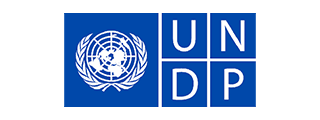Region
Sierra Leone, Madagascar & Kenya
Funding
European Commission, H2020 Funding Programme
Partners
Technical University of Berlin (TUB), United Nations Environmental Programme, University Abdou Moumouni of Niamey, Norwegian University of Science and Technology, Trialog, Finergreen, Energy Generation, West African Centre of Excellence in Renewable Energy and Efficiency, Tekniker, CIEMAT – Solar Platform of Almeria, Research Institute of Sweden, The Waste Transformers, The Freetown Waste Transformers, Ecosun Innovations, Arenys Inox, Southern African Centre of Excellence in Renewable Energy and Efficiency, Nanoé, Madagascar, African Association for Rural Electrification, East African Centre of Excellence in Renewable Energy and Efficiency, Kenya Power and Lighting Company, Odit-e, Hive Power, Opibus, Stima, Untapped, Jokosun, Euroquality
Project focal point
Josephine Mwasaru
The ENERGICA project, which involves 11 African and 17 European partners with offices or subsidiaries in Africa, promotes cooperation between actors on both continents in the field of energy access and sustainable energy development. Innovative technical solutions tailored to conditions in different contexts include nanogrids in rural Madagascar, an efficient low-tech biogas system combined with water treatment in peri-urban Sierra Leone, and a solar-powered e-mobility solution for boda-boda vehicles in Nairobi, Kenya. In power generation through the development of local renewable energy value chains to e-mobility, which also provide flexibility services to the power grid, emphasis is placed on local production and manufacturing so that local businesses and workers are significantly involved in the activities.
Hudara’s role is to ensure the sustainability of the solutions developed and the involvement of the population in each demonstration project. The co-design process includes monitoring the application of the technical solution with continuous consultation with the broader community throughout the implementation process under the leadership of a so-called Energy Transition Board. To this end, all stakeholders at the different levels will be active while integrated community energy systems are being developed. The prevailing conditions and constraints at the individual and macro-societal levels will be analyzed in order to draw appropriate conclusions for the missing link between the individual and energy production, which will be closed by community energy systems.












